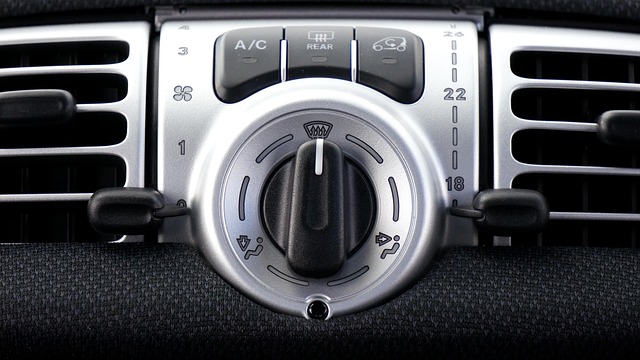Voice command technology in modern vehicles, powered by NLP and AI, enhances safety and convenience. Smart car assistants enable hands-free control over climate, navigation, and media, while adaptive cruise control and collision avoidance improve driving efficiency and security. As vehicles become more connected, Select Smart Car Tech plays a pivotal role in shaping the future of driver-vehicle interaction, aiming for seamless autonomy and reduced environmental impact, but raises concerns about safety and privacy that must be addressed.
In today’s digital age, voice command technology is transforming the way we interact with our vehicles. This article delves into the exciting advancements of smart car voice assistants and their numerous benefits, from hands-free navigation to seamless music control. We explore popular features, safety considerations, and privacy concerns, while also peering into the future of automotive voice interaction. Discover how select smart car tech is revolutionizing the driving experience for folks everywhere.
- Understanding Voice Command Technology in Vehicles
- Benefits of Smart Car Voice Assistants
- Popular Voice Command Features for Drivers
- Safety and Privacy Concerns with Voice Control
- Future Trends in Automotive Voice Interaction
Understanding Voice Command Technology in Vehicles

Voice command technology has revolutionized the way we interact with our vehicles, offering a safer and more convenient driving experience. At its core, this innovative feature leverages advanced natural language processing (NLP) algorithms and artificial intelligence to interpret and execute driver commands. By integrating voice recognition systems, modern cars can understand specific instructions related to various functions, from climate control to navigation. This hands-free approach is particularly beneficial during moments when drivers need to focus on the road, ensuring a more secure environment.
The implementation of smart car tech, such as dynamic speed limits and collision avoidance systems, further enhances safety measures. Voice commands can now adjust driving parameters based on real-time data, like traffic conditions or weather updates. Additionally, lane departure warnings are becoming standard features, utilizing voice prompts to alert drivers when they drift from their lane without signaling. These green car technologies exemplify the industry’s commitment to making self-driving capabilities more accessible and efficient.
Benefits of Smart Car Voice Assistants

The integration of smart car voice assistants has revolutionized the way drivers interact with their vehicles, offering numerous benefits that enhance both safety and convenience. One of the key advantages is the ability to keep drivers’ hands on the wheel and eyes on the road. With simple voice commands, drivers can adjust settings like climate control, navigation, and media playback without taking their attention away from the task at hand. This feature is especially valuable in today’s bustling smart cities, where staying focused while driving is crucial for safety.
Furthermore, these assistants allow for personalized driver profiles, adapting to individual preferences and habits. They can learn voice patterns, favorite stations, and even recognize specific commands, creating a tailored experience. Park sensor technologies and head-up display projections are also complemented by this technology, providing real-time information without diverting the driver’s gaze. As the vehicle becomes more connected, these assistants play a pivotal role in making driving smarter and more efficient.
Popular Voice Command Features for Drivers

Modern vehicles are increasingly incorporating voice command systems as part of their smart car tech offerings. These advanced features allow drivers to interact with their cars hands-free, enhancing safety and comfort while on the road. Popular voice command functionalities include navigation assistance, where drivers can request directions or search for specific locations without taking their eyes off the road. Another highly sought-after feature is the ability to control various vehicle settings, such as climate control, radio, and lighting, using simple voice commands.
Many cutting-edge systems also provide advanced safety measures like lane departure warnings, helping drivers stay focused and reduce the risk of accidents. Moreover, the integration of smart car technology features promotes environmental sustainability by potentially reducing a vehicle’s carbon footprint. As the future of autonomous driving draws closer, these voice command capabilities are poised to become even more sophisticated, further transforming how we interact with our vehicles.
Safety and Privacy Concerns with Voice Control

While voice command systems offer numerous conveniences in modern vehicles, they also raise significant safety and privacy concerns. As drivers increasingly rely on hands-free interaction with their cars, the potential for distraction increases. Voice control technology must be meticulously designed to prevent accidental commands from diverting a driver’s attention from the road, ensuring that critical functions like braking or steering remain unaffected.
Privacy is another critical aspect, especially as these systems often collect and process sensitive data. Select Smart Car Tech, through its vehicle-home synchronization features, might access personal information such as location, driving habits, and even conversations within the car. Users must be aware of how their data is handled and have control over its usage, particularly in light of evolving pay-as-you-drive policies that could incentivize more extensive data collection. Even seemingly innocuous commands like asking for directions or playing music can potentially expose personal details if not securely protected.
Future Trends in Automotive Voice Interaction

The future of automotive voice interaction looks promising, with advancements pushing the boundaries of what’s possible in smart car tech. As technology evolves, we can expect to see even more seamless integration between drivers and their vehicles. One key trend is the expansion of natural language processing, allowing for more complex and context-aware commands. This means drivers will be able to engage in conversational interactions with their cars, making navigation, entertainment, and vehicle settings adjustments more intuitive.
Additionally, the integration of advanced driver assistance systems (ADAS) like lane departure warnings and adaptive cruise control will further enhance voice command capabilities. Commercial vehicle optimization is another area where voice interaction can significantly improve efficiency, allowing drivers to manage fleet operations and logistics with just their voice. Furthermore, vehicle-home synchronization will enable a more connected experience, where your car can anticipate and respond to your needs, from adjusting settings upon approach to providing real-time updates on home appliances and security systems.
Voice command technology is transforming the driving experience, offering a safer, more convenient way to interact with our vehicles. As we’ve explored, smart car voice assistants provide numerous benefits, from hands-free navigation and entertainment to enhanced safety features. While privacy and safety concerns must be addressed, the future of automotive voice interaction looks promising, with advancements in natural language processing paving the way for even more intuitive and seamless interactions. When selecting Smart Car Tech, considering voice command functionality can significantly improve daily commutes and overall driving satisfaction.
